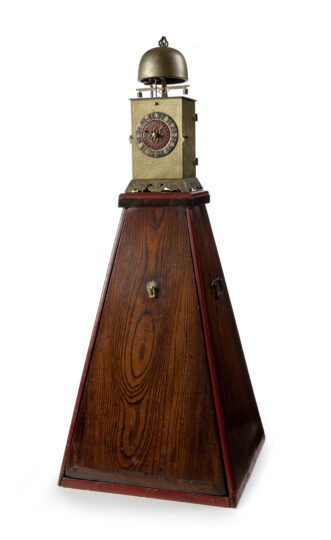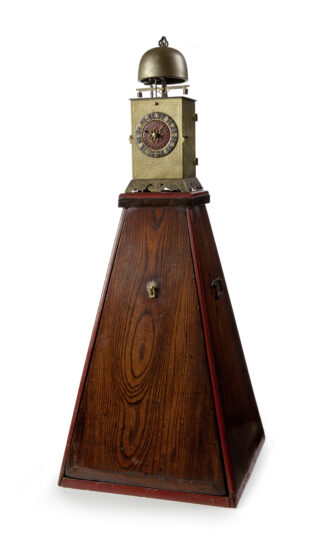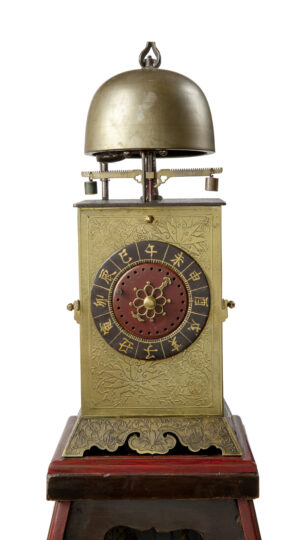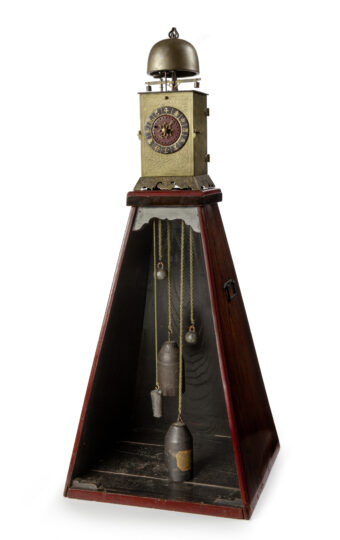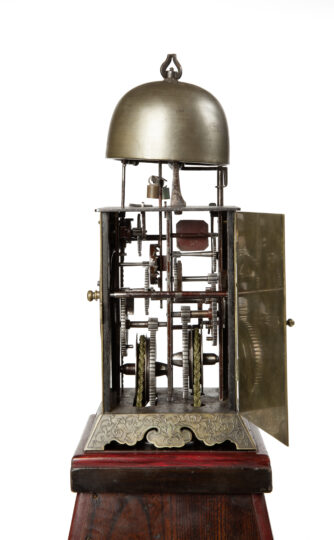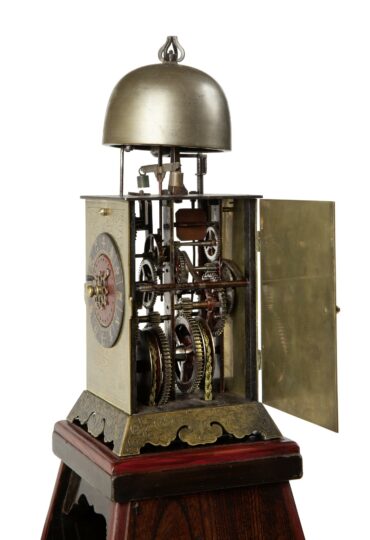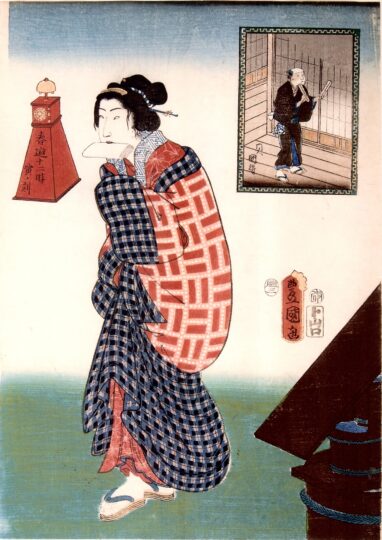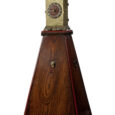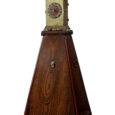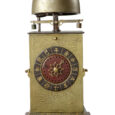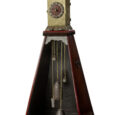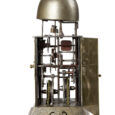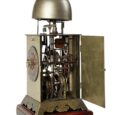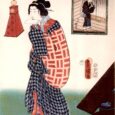JAPANESE ‘YAGURA DOKEI’ CLOCK Ca. 1750 Japan
M&R252
JAPANESE ‘YAGURA DOKEI’ CLOCK
Circa 1750
Japan
Movement
The day-going weight-driven movement is constructed between steel bars with steel arbors and wheels, the whole being situated between two patinated brass top and bottom plates. The going train has a vertical verge escapement with foliot, on which suspended weights can be moved inwards or outwards to regulate the clock. The movement also has a striking train regulated by a countwheel, indicating the hours on a bell in the Japanese way, nine times to begin with and running down to four times. Finally the clock has a weight-driven alarm.
Dial
The beautifully engraved brass front depicting flower motifs has a black painted brass chapter ring with golden Japanese characters depicting the signs of the Zodiac and a red painted centre. This revolves once every hour and carries the brass hour hand. It has 24 holes to set the alarm with a metal pin.
Case
The brass case has two hinged doors to the sides, each with a catch. The case is surmounted by a bell, under which the foliot with the brass-cased weights oscillates. The shaped bottom of the case is slightly tapered and finely engraved in flower motifs. The whole is situated on a tapered wooden base with a removable front to access the weights. It is embellished by red painted edges and has brass handles to the sides.
Duration 24 hours.
Height 85 cm.
Width 34 cm.
Depth 34 cm.
Literature
– R. Yamaguchi, The Clocks of Japan (L61)
– N.H.N. Mody, Japanese clocks, Rutland, 1967 (E17)
JAPANESE TIMEKEEPING
Japanese timekeeping was very different from timekeeping in the western world. Instead of the hour having a fixed value, the length of an hour in Japan, toki in Japanese, varies according to the length of day and night. Both day and night are divided into 6 toki, spread over the period from sunrise to sunset and from sunset to sunrise. In summer the days are longer than the nights and therefore a toki during the day is longer than one during the night. In winter this is the other way around. For this reason Japanese clocks have chapter rings with movable chapters, so that the length of the toki can be modified. There are also clocks with a fixed chapter ring. In this case the clock’s beat rate changes by moving the weights on the foliot to slow down or accelerate the clock. This is seen mainly in older clocks.
The numerals on the clocks run from 9 to 4 (The numbers 1-3 were not used for religious reasons). The only numeral that is fixed is 9 o’clock, our 12 noon. The count ran backwards because the earliest Japanese artificial timekeepers used the burning of incense to count down the time. Dawn and dusk were therefore both marked as the sixth hour in the Japanese timekeeping system. Each toki, 12 in total, also had its own zodiac symbol which is depicted on the chapter ring, around the hour numerals.

